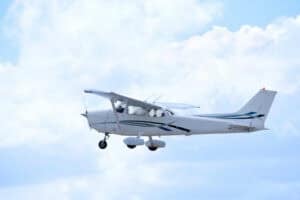Airlines remain mum about load factors, with Mango declining to participate in any kind of discourse at all.

More than 100 airlines around the world have already collapsed or are in some form of business rescue.
It’s been no different in South Africa. Comair spent months in business rescue, SA Express was liquidated, and SAA’s hope of reincarnation was stubbed out – for now.
“It’s an unmitigated disaster,” said Airlink chief executive Rodger Foster.
“Just as we started seeing a path to recovery last year, super-spreader events in KwaZulu-Natal and the Eastern Cape ignited a second wave, bred a new strain of virus and spread it quickly.”
The world isolated South Africa to contain this, too. Add to this the injection of thousands of additional seats into the market at the same time, and the recipe for a bitter pill is complete. Someone will have to swallow it.
ALSO READ: Comair to delist from JSE as business rescue plan adopted
“There is more available capacity than demand presently,” said FlySafair spokesman Kirby Gordon.
This, said Foster, was exactly the problem.
“Comair’s return to the market with Kulula and its BA franchise, along with the launch of Lift, over capacitated the market.”
Newcomer Lift launched in December, but has already cancelled or combined flights, re-accommodating passengers onto other airlines and reduced its schedule.
Co-founder of Lift Jonathan Ayache maintained: “This is not something unique to Lift. We’ve seen reductions in schedules and cancellations from all major SA airlines and in some cases supported them in accommodating their passengers.
“There was a gap for a small, nimble carrier that would adapt to the fluid situation the world now finds itself in.”
Yet, said Airlink’s Foster, most airlines were carrying load factors well below break-even points.
“Agility is now everything, in how to handle risk, in the business model, in the financial structure. The current cost structures are about 40% lower than what it would have cost to start an airline pre-Covid. This is driven primarily by the significantly lower and more flexible aircraft input costs,” said Ayache.
Comair sales and marketing executive Brian Kitchin said the industry was in a fragile state, “with little international traffic feeding into domestic routes, low demand for leisure or discretionary travel and business travel is nowhere near pre-lockdown levels”.
Airlines remain mum about load factors, with Mango declining to participate in any kind of discourse at all.
Airlink’s frank account of the state of local aviation painted the same picture as a walk through OR Tambo International on any given day. It is quiet, very quiet.
“It’s bloodshed of the worst kind,” said Foster.
He added that Comair’s sustained addition of capacity into the market would add to further industry-wide damage.
“In an attempt to fill so many seats, it has started a veritable price war on trunk routes, particularly amongst low-cost airlines. It is simply not sustainable.”
FlySafair have also cancelled a significant chunk of its schedule.
“Level 3, and particularly the tighter curfew in January, influenced our schedule dramatically,” said Gordon.
“Not only did the change severely impact passenger demand, but the curfew made the practical flying day, the actual period for which we could operate with time for customers and staff to get to and from the airport, much shorter than normal.”
Comair’s Kitchin said that “there are so many factors that could affect what is now a very fragile industry – including the vaccine roll-out, the possibility of a third wave of infections, the lifting of international travel restrictions and the speed and extent of the economic recovery”.
This makes it almost impossible to make any reliable forecast. Yet the business saw the way
clear to increase its schedule and soon relaunch its Lanseria operations.
“We are in the process of ramping up our schedule and will announce our plans soon.”
FlySafair’s view remained that competition was key, for consumer choice and maintaining the
aviation ecosystem. The sector employs several hundred thousand people in the value chain with the catalytic impact on employment in tourism, significant.
“It has always been a challenge when sharing the market with a state-owned enterprise,” said Gordon.
Airlink now has the widest domestic and regional network of any airline in South Africa and, since its divorce from SAA, the company has collected interline agreements from major international carriers.
FlySafair is by all accounts the largest player in the low-cost segment. But, for the industry to survive, said Foster, it would have to contract.
“One or two casualties are imminent,” he said. “The status quo as it is now is simply not sustainable.”
For more news your way, download The Citizen’s app for iOS and Android.






